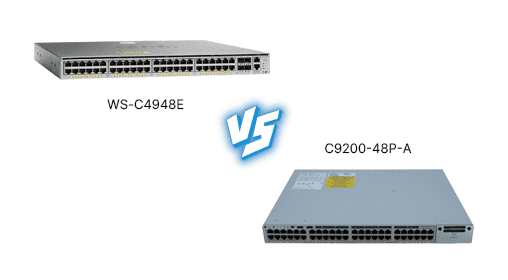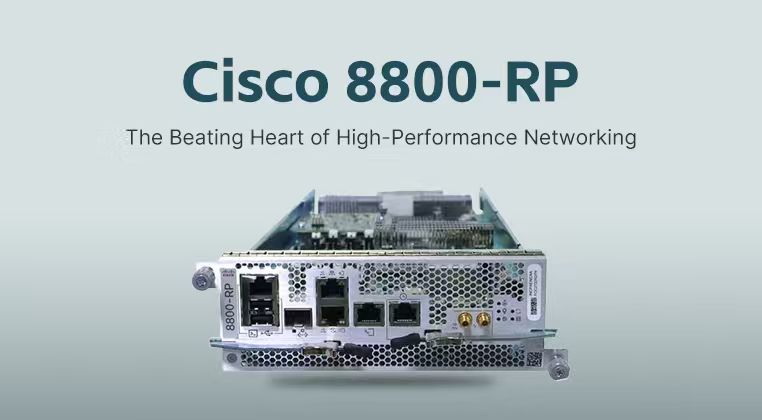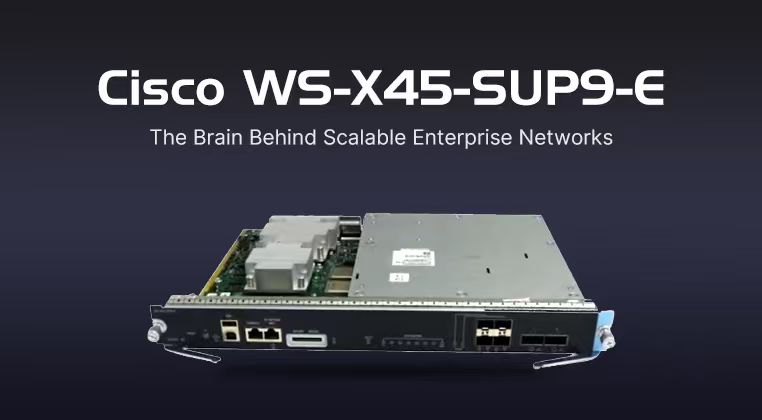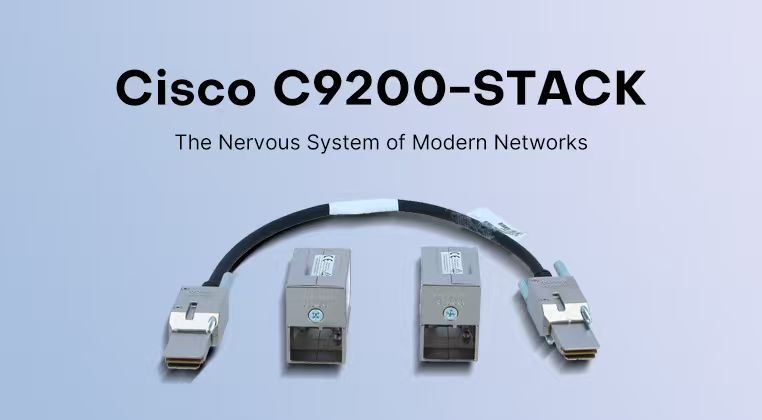















Cisco's Old Guard vs. New Generation: A Casual Look at WS-C4948E and C9200-48P-A
Hey there! So you're trying to figure out the real difference between Cisco's WS-C4948E and the newer C9200-48P-A, right? It's a classic case of a seasoned veteran going up against a modern powerhouse. Let's just dive in and see what sets them apart, without all the overly technical jargon.
First off, the core specs. This table lays out the hard numbers, and the difference is pretty striking.
|
Core Parameter |
Cisco WS-C4948E |
Cisco C9200-48P-A |
|---|---|---|
|
Series / Era |
Catalyst (Older Generation) |
Catalyst (Modern Generation) |
|
Application Layer |
Layer 3
|
Layer 2
|
|
Port Configuration |
48 x 10/100/1000Mbps ports, 4 x GE ports
|
48 x PoE+ data ports
|
|
Backplane Bandwidth |
96 Gbps
|
176 Gbps
|
|
Packet Forwarding Rate |
72 Mpps
|
361.9 Mpps
|
|
Switching Capacity |
96 Gbps |
176 Gbps
|
|
VLAN Support |
Supported
|
Up to 4096 VLAN IDs
|
|
Power Supply |
300W
|
Information missing |
Just glancing at that, the C9200 isn't just a little better; it's in a different league performance-wise. The backplane bandwidth and packet forwarding rate are massively higher, which basically means it's built to handle a lot more traffic, a lot faster. The WS-C4948E was no slouch in its day, but the C9200 is clearly designed for modern network demands.When you look at them side-by-side, the physical differences are also telling. The WS-C4948E is a bit of a chunkier unit, weighing in at 7.48 kg with dimensions of 44.5×439.1×409.9 mm. The C9200-48P-A, in contrast, seems a bit more streamlined at 44x445x288 mm and a lighter 4.53 kg. It's like comparing a reliable old sedan to a newer, sleeker model.
Where things get really interesting is in their functionality and brains. The WS-C4948E runs on the classic Cisco IOS, which many network engineers cut their teeth on. It's a solid, proven workhorse. The C9200, however, runs on Cisco IOS XE. This is a more modern, Linux-based operating system that offers greater flexibility, better automation capabilities, and is generally more suited for today's software-defined networks. It's simply more programmable and easier to integrate into modern management systems.
For someone using these switches, the experience is worlds apart. Working with the WS-C4948E feels like driving a classic car with a manual transmission. It's reliable, and you have direct control, but it lacks the modern assists. The C9200-48P-A, on the other hand, is like a modern car with an advanced navigation system and driver assists. Features like enhanced PoE+ support for powering devices like phones and access points are built-in, and managing it through a centralized controller is far easier for larger deployments. The C9200 also supports switch stacking, allowing multiple physical units to act as one, which greatly simplifies management.Talking about stability, the WS-C4948E has a long track record of being a rock-solid, stable switch for core network duties. Its Mean Time Between Failures (MTBF) is known to be high, often cited in the hundreds of thousands of hours. The C9200 series is designed with this same legacy of reliability in mind but adds the benefits of more modern hardware and an operating system that's easier to keep secure and updated. For 24/7 operation, you'd trust either, but the C9200 gives you more tools to maintainthat stability proactively.
So, which one gives you more bang for your buck? Well, the WS-C4948E, being an older model, might have a lower acquisition cost. However, it's crucial to think about the long game. The C9200-48P-A, while likely a bigger initial investment, offers much greater performance, modern management features that save time and effort, and power-efficient PoE+ capabilities. You're not just paying for a switch; you're paying for efficiency, scalability, and lower total cost of ownership over time.Let's break down the pros and cons.
The Cisco WS-C4948E is the old reliable. Its main advantage is its proven stability and familiarity for engineers who know the classic IOS inside out. The downside is its aging architecture. The performance specs are simply outclassed by modern standards, it lacks advanced features like high-power PoE, and it might not receive the same level of software support or security updates as newer models.
The Cisco C9200-48P-A is the modern solution. Its strengths are massive: huge performance headroom, a modern operating system (IOS XE) with great automation features, strong PoE+ capabilities, and support for stackability that makes network management a breeze. The potential drawback is the higher initial cost compared to older models.
In a nutshell, your choice really depends on what you need. If you're looking for a cost-effective, rock-solid switch for a simple, stable network that won't see major growth, the WS-C4948E might still fit the bill. But if you're building a network for today and tomorrow, with a need for speed, power, and easy management, the C9200-48P-A is the clear winner. It's an investment in the future of your network.




